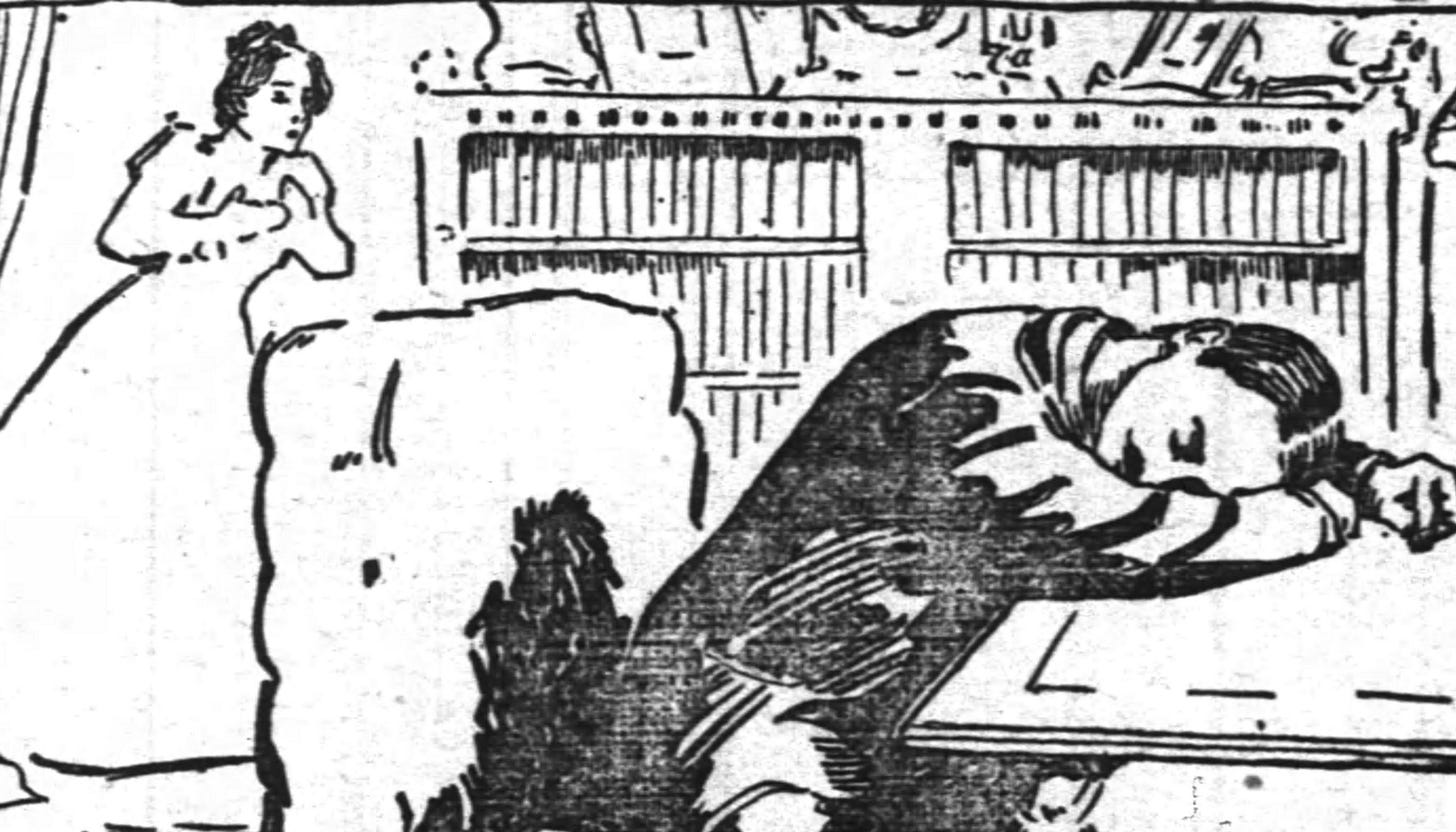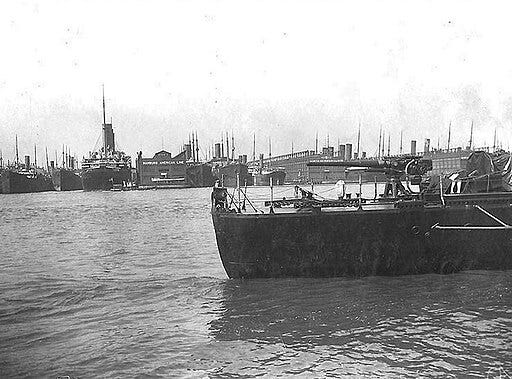This is the fourth and final installment of Charlotte Zureick’s true crime series, A woman around whom death lingered. If you missed any of her prior posts, here are the first, second, and third installments. I appreciate Char’s efforts in researching and sharing this story, and I am excited to report that she will continue to bring her unique historical perspective to The Silent Sod in future posts. -SZB
The Havemeyer Affair
In Pt. 2 of A woman around whom death lingered, I mentioned a comment by the mayor of Aiken in which he alluded to “The Havemeyer Affair.” Charles Havemeyer was the first husband of Mrs. Beach. He was a member of a wealthy family, the Havemeyers, who opened a candy bakery in old New York that eventually grew into a sugar refinery. In 1898, he was found shot in the head in his large house in the countryside of Roslyn, lying over his desk with a discharged revolver by his side.

It was noted that Havemeyer was “young, rich, happily married, the father of two pretty children, an athlete and sportsman.”1 An investigation suggested that he could have been cleaning the revolver when it discharged on accident, but a cloud of mystery continued to hang over the incident despite this conclusion.
His widow, the soon to be Mrs. Beach, was married shortly after his death to New York society man, Frederick O. Beach, who had been a good friend of her husband. The wedding was private, and there was noted animosity between Mrs. Beach and the family of Charles Havemeyer, who vowed to never speak to her again.
The Havemeyer family has an interesting story themselves that includes several tragedies. A couple of years after Havemeyer’s death, his sister was found shot in the head in her home library with a pistol by her side, much like her brother. Ultimately the coroner ruled this an accident, even though there was also uncertainty regarding the cause of death as there had been in the case of her brother. Another tragedy befell George Havemeyer, an older relative of Charles Havemeyer, who was crushed by a falling piece of machinery in his father’s sugar refinery before his father’s eyes.
An article about the Havemeyer family from The Inter Ocean dated July 29, 1900, states:
“Amid their handsome chateaus and wondrous gardens, amid their well-appointed stables and gorgeous equipages, amid their yachts, in their giant sky-scrapers, on their footsteps, always following, dogging, dogging tirelessly, is the black, gaunt figure of sudden death and mystery.”2
More to the story
I couldn’t help but wonder if there had been more to the story of Charles Havemeyer’s death due to the way it had been brought up by Aiken’s mayor in response to the attack on Mrs. Beach. It made it seem like he thought Mr. Beach might have been involved in this earlier incident too. It also was interesting that the Havemeyer family would cut Mrs.Beach off after she remarried. It could be understandable that they might have found it hard to accept in their state of grief, but it also makes me wonder if they had suspicions of their own about the death of Charles Havemeyer.
It seems like that “figure of sudden death and mystery” that haunted the Havemeyers did not go away when Mrs. Beach married into a new name. The whole time I was reading about the Beach affair, I had the image of the grim reaper making an attempt but missing three times: 1) the near death of Mrs. Beach in the attack, 2) the near booking of the couple on the ill-fated voyage of the Titanic, and 3) the near death of an innocent Black person who might have been implicated as Mrs. Beach’s “unknown assailant.”
The fate of the liners
We all know the fate of the Titanic, but what of the other two ocean liners involved in our story?
The Mauretania, the liner that brought the Beaches to England in Pt. 1 of the story, was later used during World War I. She served as a troopship to carry soldiers during the Gallipoli campaign and later as a hospital ship. She additionally served when the U.S. entered the war by carrying U.S. soldiers over to Europe. Following the war, she went back to carrying civilian passengers across the Atlantic until her service was no longer needed in 1934 after the merger of the Cunard line with the White Star line. She was sent for scrapping in 1935.3
The ocean liner that returned the Beaches from their trip to England, the Kaiser Wilhelm II, mentioned in Pt. 2 of the story belonged to the German company Norddeutscher Lloyd. When the U.S. declared war on Germany in 1917, they seized German ships who were docked at the U.S. controlled ports for service, and she happened to be one of these ships.

The Kaiser Wilhelm II was renamed Agamemnon, and after receiving repairs due to the German crew intentionally damaging her, she regularly crossed the Atlantic as a support ship to the American Expeditionary Forces. She also had a bout of Spanish flu onboard in 1918. She continued to serve in transporting U.S. troops until she eventually was put out of service and scrapped in 1940.4
Closing
One of the many reasons I find reading about Titanic so interesting is that it provides a microcosm of what the world looked like in 1912. You meet so many different characters and in doing so learn about the different forces that moved the world in this period.
Part of the time that I was writing the Beach story, I disliked it as much as I disliked watching the Nazi propaganda film created in 1943 titled Titanic. It can be hard to stomach the beliefs and ideologies held by our fellow humans of yesterday, but I also think that understanding those beliefs is essential in evaluating our own today. You as a reader also may have felt discomfort in reading this story at times too, so I thank those who stuck with it.
The account of the Beaches also opened my eyes to how much progress has been made in the legal system over the past century, largely due to breakthroughs in the field of forensic science. With the changes that have happened in both forensics as well as the continuous work of many who have called out the injustice of the lynching system, if a case like this were to happen today, there would likely be a much more thorough and scientific investigation into the facts. As much as I know there is still room for improvement, I am glad to live in a time where we have the tools to look closer than what the investigators would have had in those times.
I hope you enjoyed reading about this mystery and perhaps will look more into some of these fascinating topics of the Titanic era.
“Black Hand of Fate, Disaster Hangs Its Sable Pall Over The Havemeyer Family,” The Inter Ocean, (Chicago, Illinois), 29 Jul 1900, p. 39.
Ibid.
“RMS Mauretania (1906),” Wikipedia, Wikimedia Foundation.
“SS Kaiser Wilhelm II,” Wikipedia, Wikimedia Foundation.






It definitely is interesting to pick a focal point in history, like the Titanic, and look at the wide variety of people impacted to get a sense of what life was like at that time. And it intrigued me that the Beach's connection was one where they didn't end up on the ship rather than they did. Thanks for putting together this series.